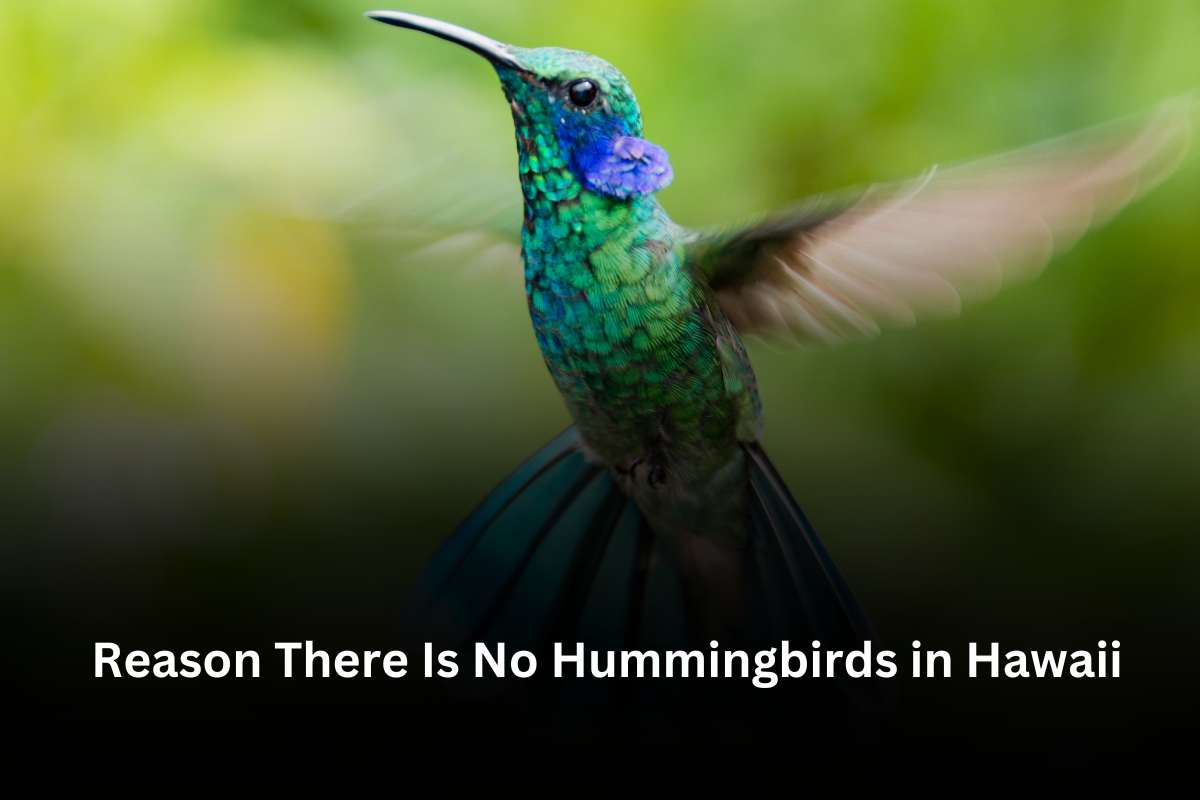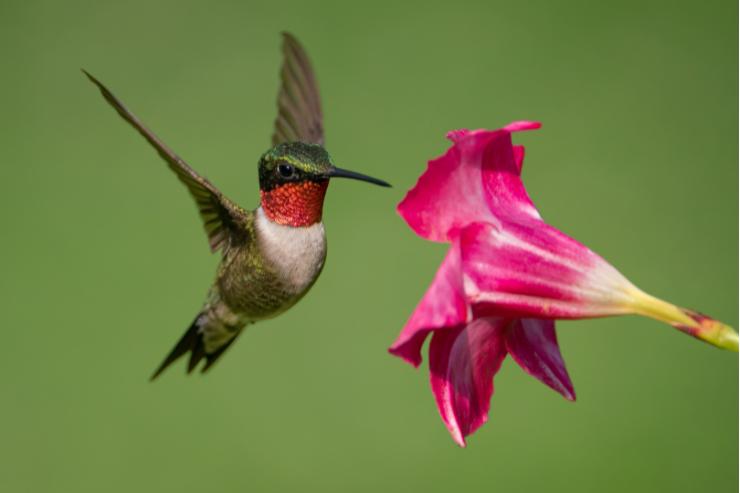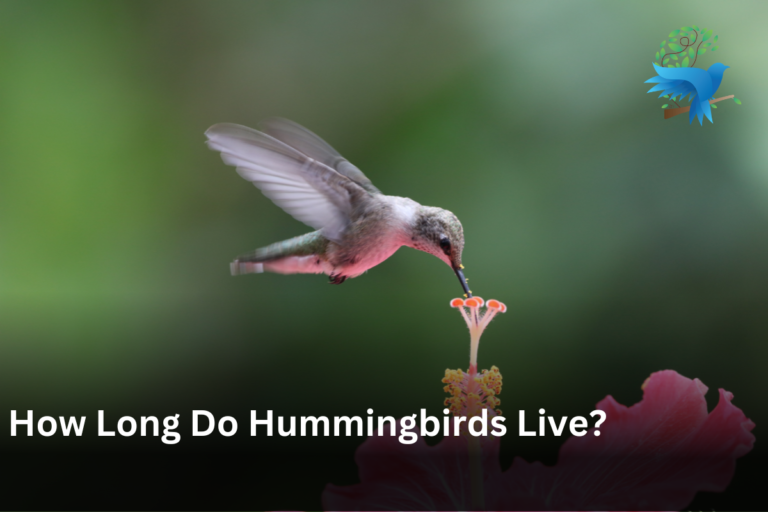Reason there is no Humming birds in Hawaii

Hawaii’s vibrant and diverse ecosystem is known for its distinct flora and fauna, which includes a magnificent diversity of species found nowhere else on the planet.
While the islands have a healthy avian population, hummingbirds, recognized for their colorful wings and characteristic hovering flight, are missing from this ecological tapestry.
Unlike many other parts of the Americas where hummingbirds are common, Hawaii lacks these tiny, nectar-loving birds.
Let’s look into the causes of the lack of hummingbirds in Hawaii and find the reasons for their extinction in this tropical paradise.
Geographical Isolation of Hawaii
Hawaii’s isolated location in the Pacific Ocean has prevented hummingbirds from reaching the islands, as they are unable to navigate large water spans.
This geographical isolation has hampered species’ natural dispersal, including hummingbirds, which use land bridges or migratory corridors to occupy new territory.
The absence of hummingbirds in Hawaii highlights the significant impact of geographical isolation. As a result, viewing hummingbirds will be difficult due to Hawaii’s distance.
Hawaiian Evolutionary Path
Because of its geographic isolation, Hawaii is home to a plethora of rare species found nowhere else on the earth.
These species have evolved to fit the islands’ different conditions. Despite Hawaii’s affluent bird population, hummingbirds are noticeably absent.
The evolutionary paths pursued by Hawaiian fauna resulted in the formation of particular species that fill various ecological niches.
Unfortunately, hummingbirds did not participate in this evolutionary process. Therefore, Hawaii is devoid of these fascinating and colorful winged creatures.
Different Pollination Systems
The absence of hummingbirds in Hawaii can also be due to variations in pollination systems. Hummingbirds are essential pollinators in their natural environments, where they have developed alongside specific plant species that rely on them for pollination.
However, plant species found in Hawaii may have yet to develop alongside hummingbirds; instead, they rely on other pollinators such as insects, bats, or wind for pollination.
Without the existence of co-evolved plant species that offer nectar and pollen supplies for hummingbirds, there is a smaller ecological niche for them to inhabit in Hawaii.
As a result, the variations in pollination systems between Hawaii and hummingbirds’ native environments lead to their disappearance from the islands.

Oceanic Barriers for Hummingbirds
Oceanic barriers pose substantial hurdles to hummingbirds, preventing their natural spread and colonizing isolated islands such as Hawaii.
With their small size and high energy requirements, Hummingbirds must be better suited to navigating vast stretches of open ocean.
Unlike larger birds capable of long-distance flying, hummingbirds lack the endurance to cover hundreds or thousands of miles of water.
As a result, the vast distances that separate islands like Hawaii from continental landmasses serve as intense obstacles, preventing hummingbirds from migrating naturally and contributing to their disappearance in these isolated habitats.
Hawaii’s Unique Ecosystem
Hawaii’s ecology has evolved independently for millennia without hummingbirds.
Nestled in the center of the immense Pacific Ocean, it is home to many varieties of flora and fauna found nowhere else.
As a result, if these birds are introduced, the ecosystems may lack the specific plants and nectar sources they require to thrive.
Instead, native varieties have adapted to fill hummingbirds’ ecological responsibilities.
If hummingbirds are introduced, this natural equilibrium may be upset, potentially causing imbalances in Hawaii’s sensitive ecosystems.
Potential for Ecological Disruption
The introduction of hummingbirds into Hawaii poses a significant risk of ecological disruption.
Hawaii’s ecosystems have evolved over thousands of years without these birds, resulting in a delicate balance maintained by native species adapted to the local conditions.
Hummingbirds could disrupt this balance by competing with native species for resources like nectar and territory.
They may also act as disease vectors or introduce new predators, causing additional damage to natural flora and fauna.
Absence of Suitable Habitats
Hawaii’s diverse ecosystems, including forests, grasslands, and coastal areas, lack the specific habitats necessary to sustain hummingbird populations.
Hummingbirds thrive in regions with a mix of open spaces for foraging and dense vegetation for nesting, which are absent in Hawaii.
Despite the variety of environments in Hawaii, hummingbirds have never inhabited the islands, leaving numerous ecological niches unoccupied.
Introducing hummingbirds to Hawaii poses challenges due to the limited suitable habitats available for their survival and reproduction.
No Evolutionary Pressure
Another reason for the absence of hummingbirds in Hawaii is the need for more evolutionary pressure.
Hummingbirds evolved specialized traits and behaviors in response to the ecological conditions of their native habitats, such as competition with other bird species for nectar and the need for efficient flight for long-distance migrations.
In Hawaii, where these specific ecological pressures are absent, there has been no evolutionary drive for hummingbirds to colonize or adapt to the islands’ environment.
Therefore, the unique evolutionary dynamics that shaped hummingbird species elsewhere did not occur in Hawaii, further contributing to their absence from the islands.
Migration Limitations
The absence of hummingbirds in Hawaii is also due to migration limits. Hummingbirds are recognized for their astonishing long-distance migrations, yet their small size and high metabolism necessitate frequent feeding pauses.
The journey from the Americas, where hummingbirds are most common, to Hawaii is a vast expanse of ocean with few good resting spots and food sources for these tiny birds.
As a result, the Pacific Ocean’s geographical barrier has most likely prevented hummingbirds from spontaneously establishing populations in Hawaii.
Therefore, migration constraints are a crucial factor contributing to the absence of hummingbirds in Hawaii.
Dietary Needs
Dietary requirements also contribute to the need for hummingbirds in Hawaii. Hummingbirds eat a specific diet that consists primarily of flower nectar, supplemented by bug protein.
Their unusually long, slender bills and specialized tongues are designed to extract nectar from flowers.
However, the native plant species in Hawaii lack the richness and diversity of nectar-rich blooms that hummingbirds require in their native environments.
Without enough nectar sources, hummingbirds would struggle to obtain nourishment in Hawaii.
As a result, the lack of sufficient nutritional resources reduces the likelihood of hummingbird colonies establishing themselves on the islands.
Predation Concerns
Predation concerns are another factor contributing to the absence of hummingbirds in Hawaii. Hummingbirds are small and agile birds that are vulnerable to predation from various animals, including birds of prey, snakes, and mammals.
In their native habitats, hummingbirds have evolved alongside natural predators and developed behaviors to avoid or mitigate predation risks.
However, Hawaii’s isolation from mainland ecosystems means that many of the typical predators of hummingbirds are absent or less common on the islands.
While Hawaii does have its own native predators, such as certain bird species and introduced predators like rats and mongooses, they may not pose the same level of threat to hummingbirds as the predators found in their native ranges.
Nonetheless, the introduction of new predators to Hawaii has historically disrupted native ecosystems and led to the decline or extinction of native bird species.
The absence of hummingbirds in Hawaii may be partly due to the lack of suitable defenses against predation in the face of introduced predators.
As a result, predation concerns represent another barrier to the establishment of hummingbird populations in Hawaii.
Potential Disease
Another factor contributing to the lack of hummingbirds in Hawaii is the risk of disease. Hummingbirds, like all animals, are susceptible to a variety of diseases, including those transmitted by parasites such as mites and mosquitoes.
In their natural settings, hummingbirds may have developed resistance or immunity to local diseases. However, transferring hummingbirds to a new location, such as Hawaii, may expose them to new diseases to which they are not naturally immune.
Hawaii’s remoteness from mainland ecosystems results in distinct disease dynamics, with diseases and vectors different from those of the hummingbirds’ native regions. Introducing hummingbirds to Hawaii may result in disease outbreaks that affect both the hummingbirds and the native species.
As a result, the possibility of disease transfer and a lack of natural immunity to local diseases are serious problems that may lead to the extinction of hummingbirds in Hawaii.
This emphasizes the need to take into account potential disease implications when considering the feasibility of introducing non-native species to new environments.
Conclusion
In conclusion, the absence of hummingbirds in Hawaii is a complex issue influenced by geographical isolation, evolutionary processes, pollination systems, migration limitations, dietary needs, predation concerns, and potential illness risks.
Hawaii’s distinctive ecosystem, distinguished by its remote location and diverse flora and fauna, evolved independently of hummingbirds, contributing to a delicate ecological balance maintained by native species.
Introducing hummingbirds to Hawaii could upset the balance and endanger native animals and habitats.
While hummingbirds are attractive, their absence in Hawaii demonstrates the complex interaction between species and their habitats.
It emphasizes the significance of evaluating the ecological consequences and potential risks when introducing non-native species into new ecosystems.
Finally, sustaining Hawaii’s unique biodiversity necessitates a careful strategy that respects the island’s delicate natural balance.
Frequently Asked Question
Could hummingbirds survive if introduced to Hawaii?
The introduction of hummingbirds to Hawaii could offer ecological problems such as resource competition with local species, disruption of natural habitats, and disease transmission. As a result, the possibility and implications of such introductions would require significant evaluation.
Have there been attempts to introduce hummingbirds to Hawaii?
There have been occasional plans to bring hummingbirds to Hawaii, but none have been successful or widely implemented due to worries about potential ecological consequences and a lack of suitable habitat.
Could climate change affect the potential for hummingbirds in Hawaii?
Climate change may alter environmental conditions in Hawaii, reducing the availability of adequate habitats and supplies for hummingbirds. However, other variables, such as physical obstacles and evolutionary processes, would continue to impact their prevalence on the islands.
Could diseases be a factor in the absence of hummingbirds in Hawaii?
Yes, disease transmission and a lack of natural immunity to native diseases are significant issues that may contribute to the absence of hummingbirds in Hawaii.






